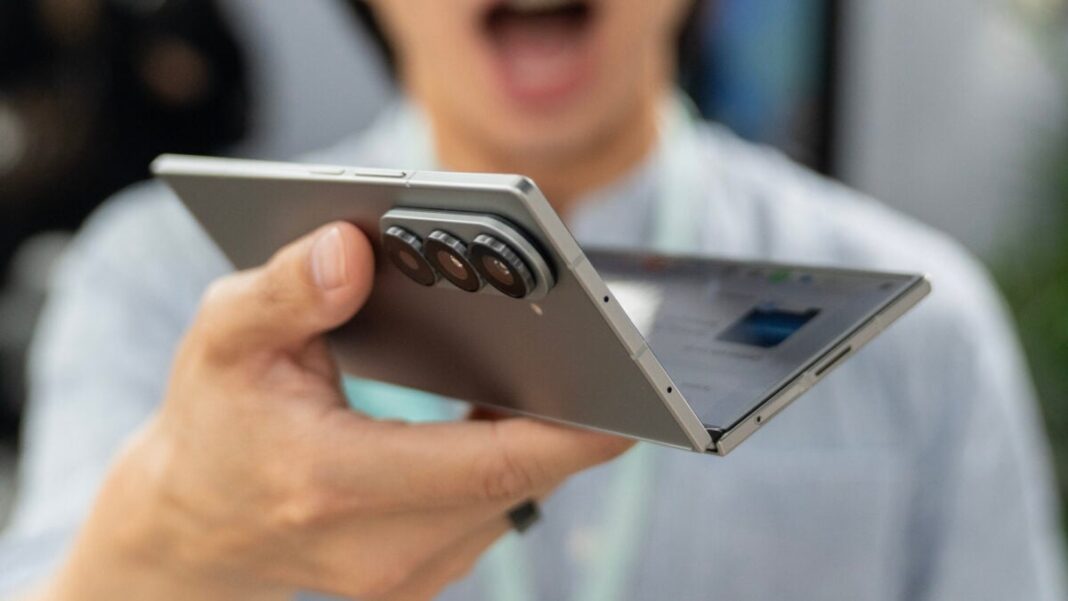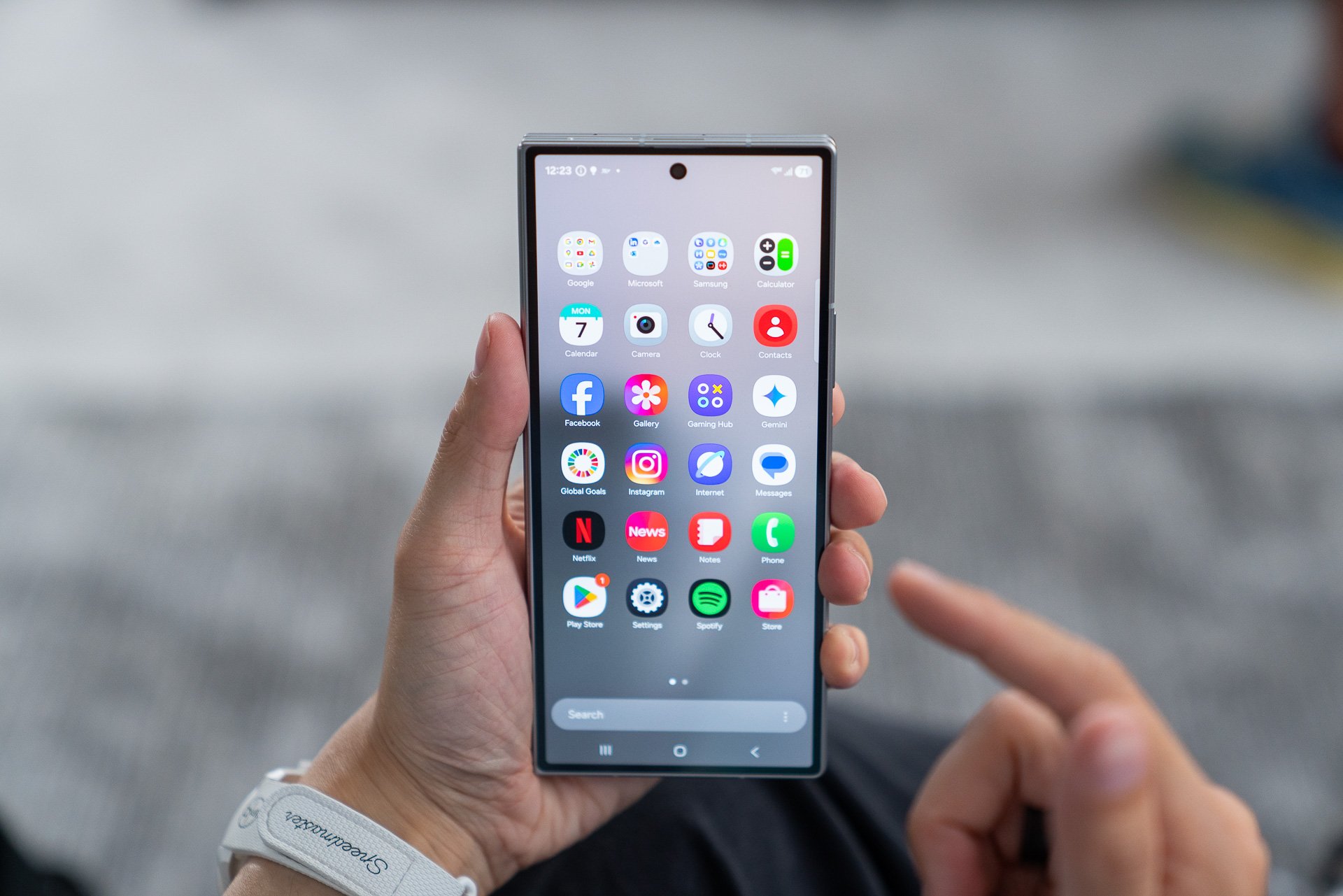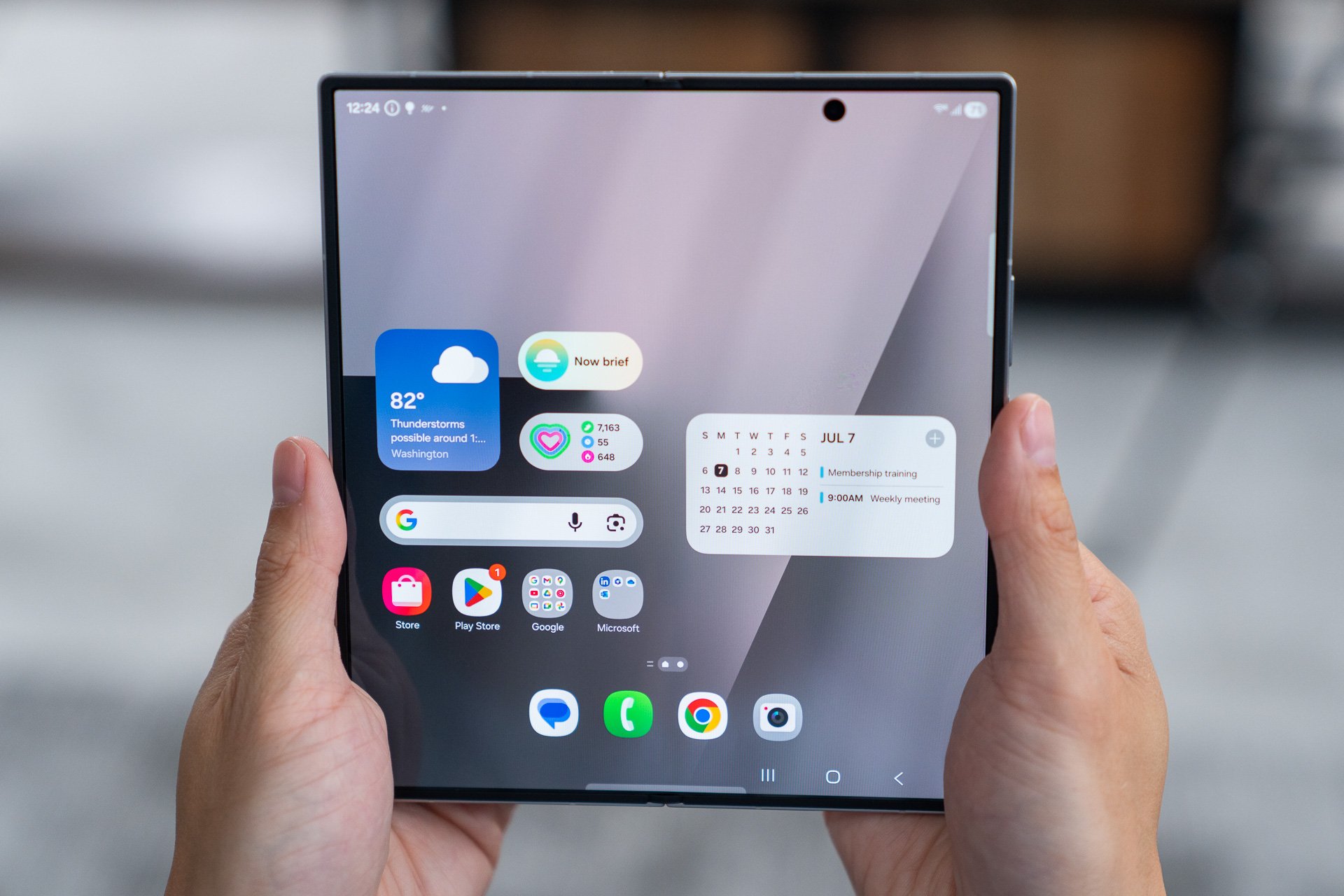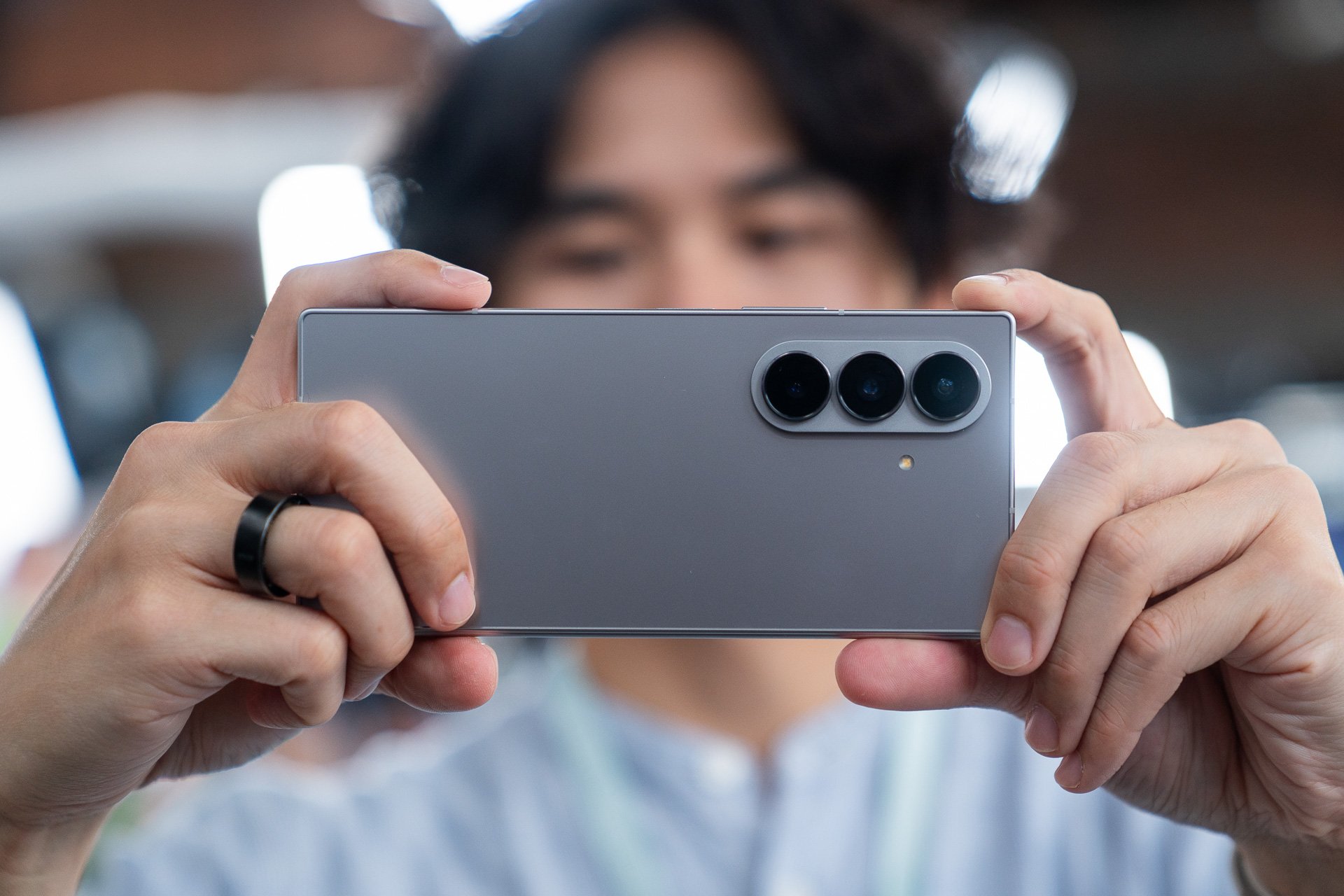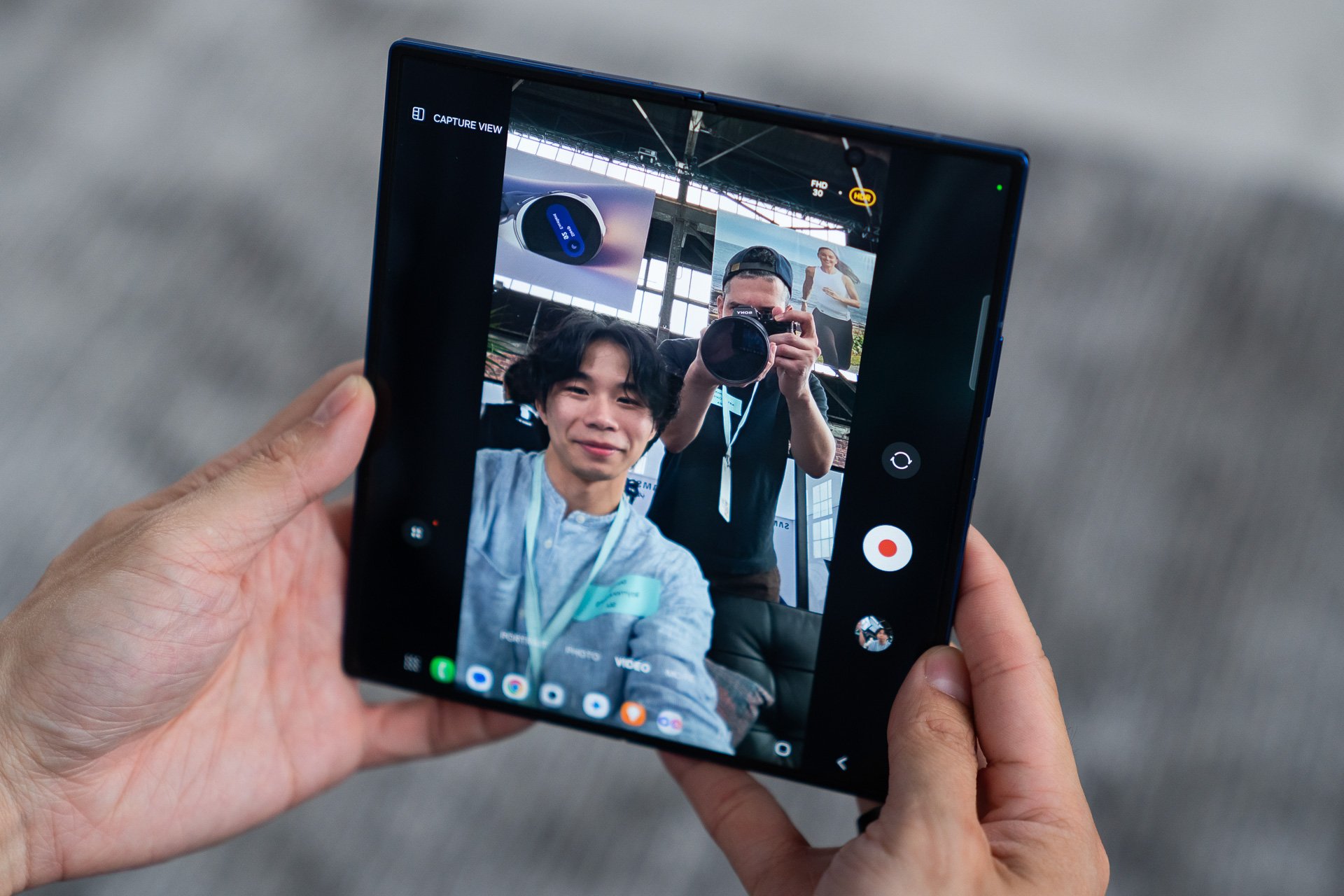Headlining Samsung’s summer Unpacked event is the Galaxy Z Fold 7. The device is the thinnest and lightest book-style foldable that Samsung has ever made and finally delivers on the idea of a smartphone that can unfold into a larger tablet without the tradeoff of carrying a brick in your pants.
See Galaxy Z Fold 7 at Samsung.com
You really need to hold the Z Fold 7 in your hand to believe it. Having tried every single Z Fold since the original came out in 2019, I was not prepared to see such a year-over-year leap from the Z Fold 6 to the Z Fold 7. Closed, the Z Fold 7 is 8.9mm, which is nearly as thin as an 8.2mm S25 Ultra. And somehow, the Z Fold 7 is lighter than the S25 Ultra by 3g. The foldable wows the most when you unfold it and its tablet form measures a stunning 4.2mm thick, which is even thinner than the 5.8mm S25 Edge. For comparison, the Z Fold 6 is 12.1mm thick when closed and 5.6mm thick when unfolded. I spent maybe the first five minutes palming the Z Fold 7 with awe—Samsung really made its Z Fold as thin and light as a regular flagship bar phone. The son of a gun really did it!
To make the Z Fold 7 even more like a bar phone when closed, Samsung increased the cover screen to 6.3 inches and widened it to a 21:9 aspect ratio, which consequently also widens the inner folding screen to 8 inches (diagonal) since it’s double the external one. The result is a phone that’s not so skinny when closed, which was a major criticism of Samsung’s book-style foldables since the original, and is more suitable for regular-sized app content. It’s great to not feel like you’re gripping a TV remote anymore.
Like the Z Flip 7, Samsung’s fortified the Z Fold 7 for even greater durability. The “armor” aluminum is stronger (though it’s still very likely the phone will snap in half without much pressure) and the cover screen and rear glass back are both made with tougher Corning Gorilla Glass Ceramic 2 and Gorilla Glass Victus 2, respectively. The inner folding screen is thinner than it was on the Z Fold 6, but Samsung says it added a titanium plate to provide structural rigidity and made the glass surface itself 50% thicker. I’m all for it, but we’ll have to wait for some real-world tests before we can be sure the Z Fold 7 doesn’t suffer its own #bendgate. Making the screen does come with a downside: S Pen stylus support is gone. Samsung says its research showed few people bought and used the stylus with previous Z Folds. I’m sorry if you’re one of the three people who did use the S Pen with their Z Fold.
As part of making the Z Fold 7 more “Ultra”-like, the phone has Qualcomm’s most powerful Snapdragon 8 Elite chip and 12GB of RAM. Storage comes in either 256GB or 512GB. Unfortunately, the battery capacity didn’t increase from the Z Fold 6—it’s still a 4,400 mAh cell. A thinner phone usually comes with the tradeoff of a smaller battery, though the chipset’s better efficiency can offset that. We’ll need to test the battery ourselves to see if the Z Fold 7 is on par with its predecessor.
Where Samsung really stepped up is the triple-lens camera system. The main camera is the same 200-megapixel shooter from the S25 Ultra, the ultra-wide has 12 megapixels of resolution, and the telephoto is 10 megapixels. The cover camera and inner hole punch camera are both 10 megapixels. To achieve better image quality for both photos and video (now supports 10-bit HDR), Samsung says it tweaked the ProVisual Engine for better low-light performance and reduced noise during video. I’ll be the judge of that when I get a Z Fold 7 review unit for testing; Samsung’s demo area was well-lit and staged to make photos and videos look their very best.
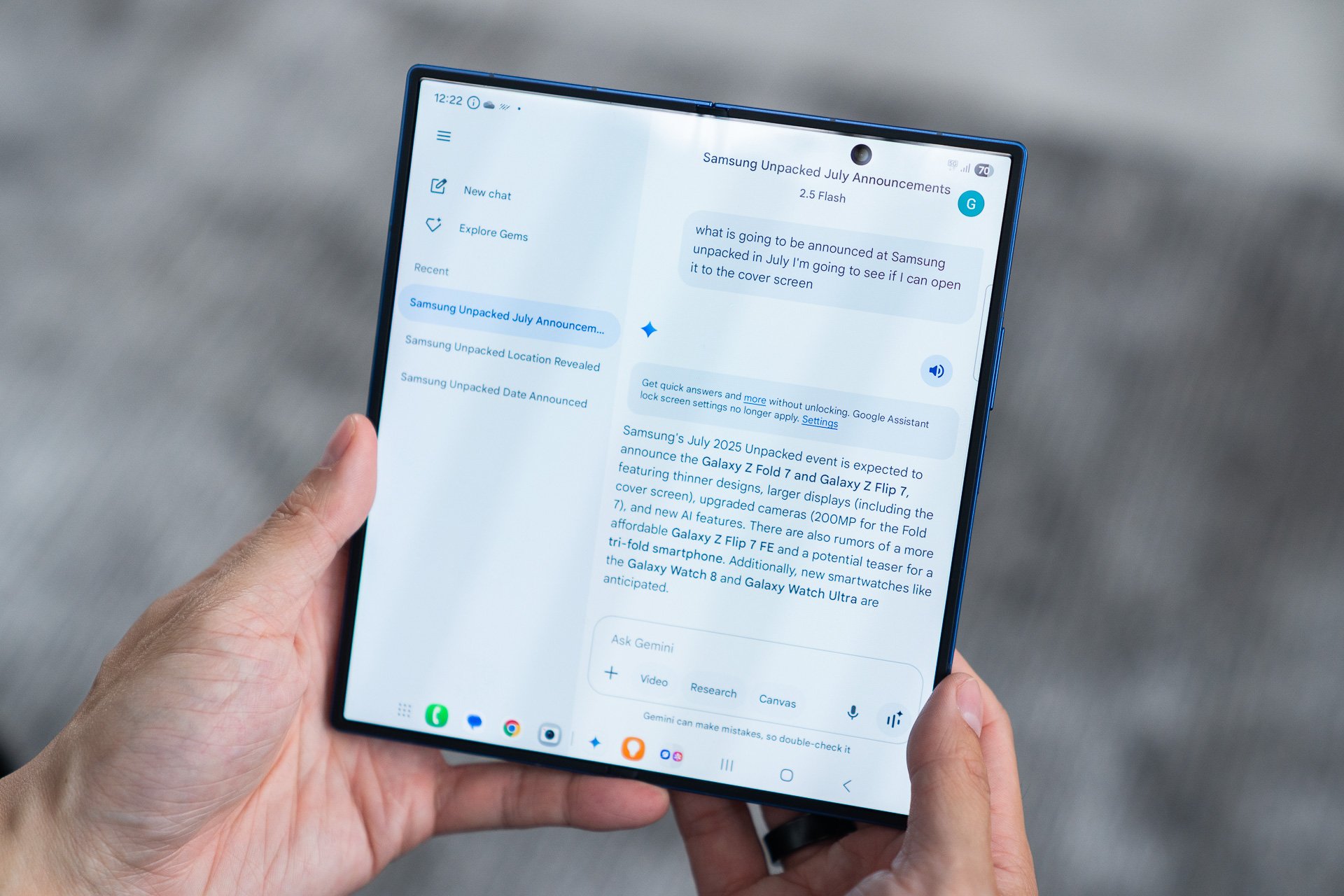
Samsung isn’t rushing to jam too many AI features like other phone makers. It’s again sprinkling just a little bit into the Z Fold 7 to make it less intimidating to use. To make better use of the bigger screen, Google’s Gemini AI chatbot can be opened in several views, including as a panel in split view or as a pop-up window over content. The AI chatbot is also multimodal, meaning it can switch between understanding what it sees through the camera, what you say to it via voice, and what you type on the screen via a text prompt. Other AI niceties include drag-and-drop support for AI-generated content and an Audio Eraser tool that you can use to remove noise like wind or traffic from videos. Circle to Search, one of the most practical AI uses on a phone, can now show gaming tips when you’re playing games. It’s basically like having your personal GameFAQs.
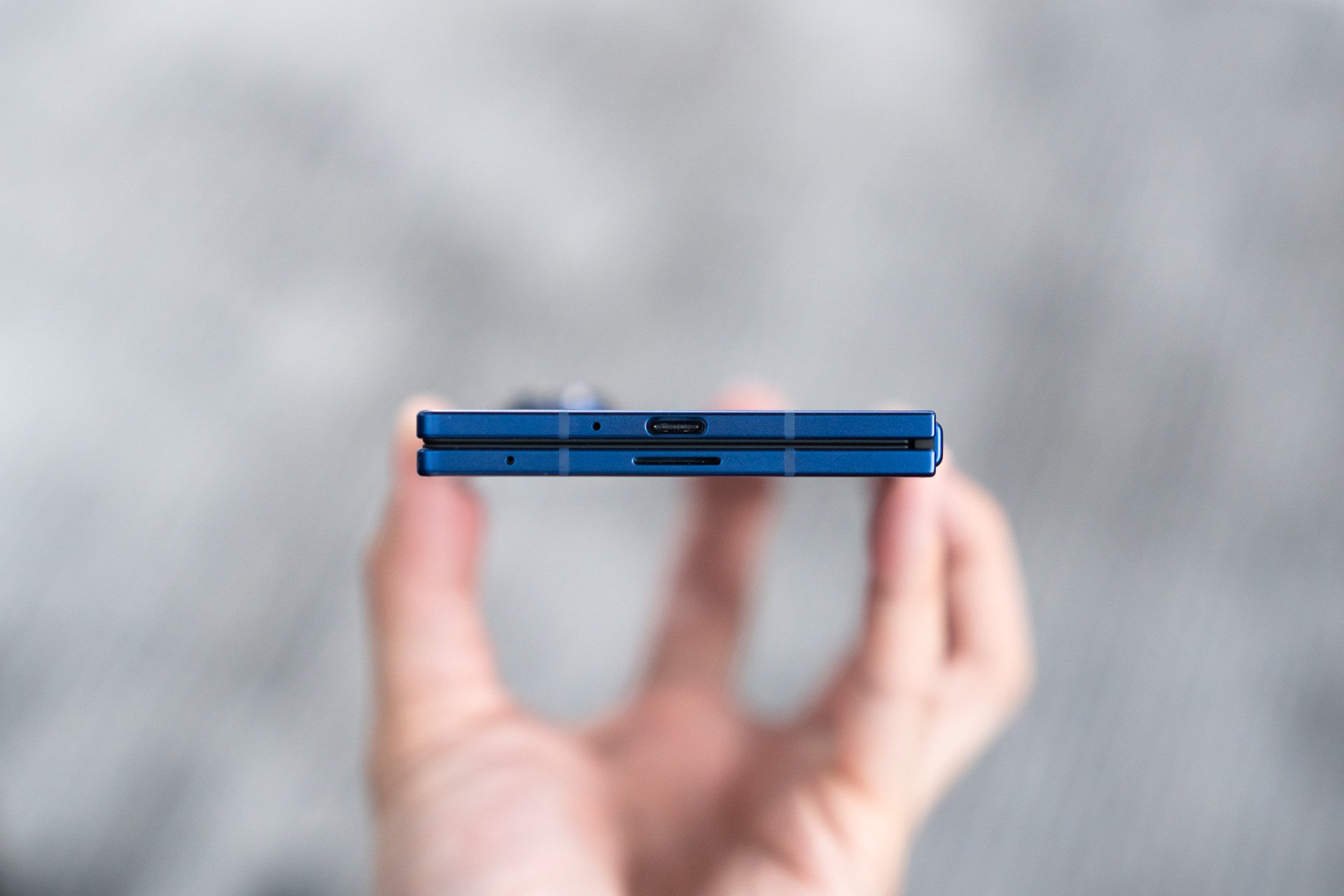
So the Z Fold 7 seems to have it all, right? Well, getting it all will cost you—$2,000 specifically. The reality is that book-style foldables—at least ones from Samsung—are unlikely to get cheaper. Samsung has had six years to make the Z Fold more affordable, but it’s only increased in price. That’s a lot of bones for a foldable, but it’s still like you’re getting a phone and a tablet in one—only that device will no longer literally weigh you down. If that’s not a proposition you care for, then keep walking. The Z Fold 7 is available for pre-order starting today and will be available starting on July 25.
See Galaxy Z Fold 7 at Samsung.com

